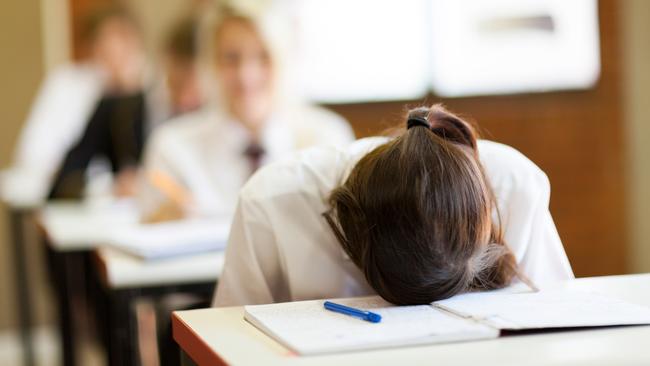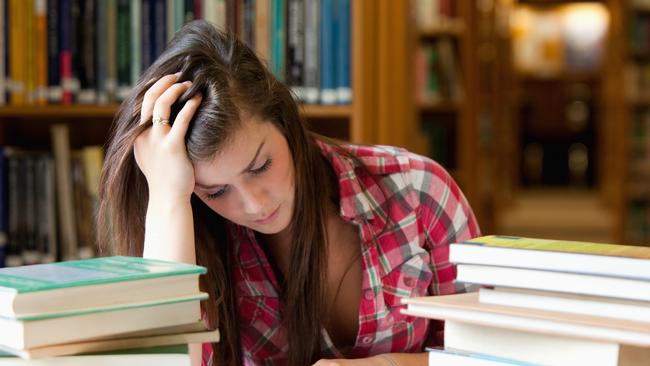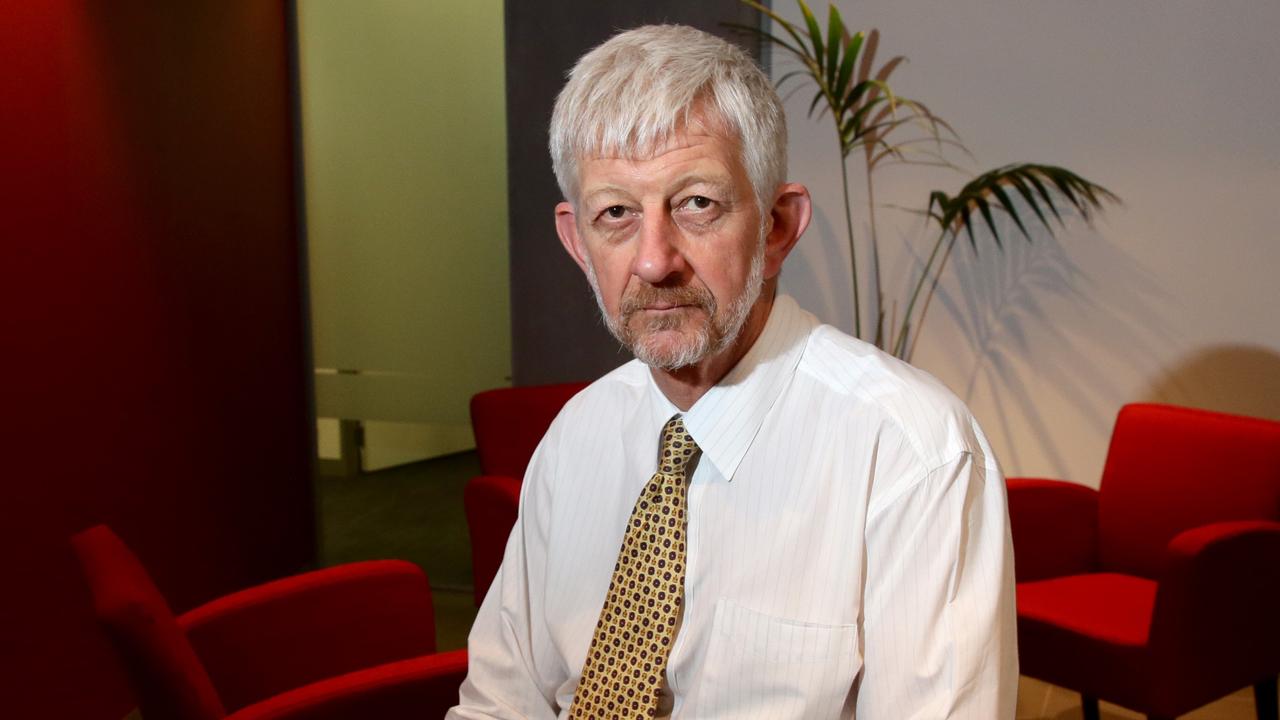Girls more stressed at school but boys are bullied, OECD survey shows
Schoolgirls are reporting anxiety, fear and panic at twice the rate of boys, who are more likely to be bullied, a new study of 13,000 Australian teens reveals.

Teenage schoolgirls are reporting anxiety, fear and panic at twice the rate of boys, based on global data exposing a gender gap in children’s mental health.
Boys are more likely to be bullied at school, yet girls are twice as likely to report stress and anxiety, the Australian Council for Educational Research on Tuesday after analysing a survey of 13,437 students from 743 Australian high schools.
Linking student wellbeing to academic success, the data shows that boys appear more resilient to stress than girls, who are more likely to worry about exams, panic easily and feel out of place at school.
Boys are more likely to be victims of bullying, and twice as likely to be hit or pushed by classmates but teenage boys showed greater resilience – 44 per cent reported they “handle stress well’’, compared to just 26 per cent of girls.
Students were asked about bullying, stress, digital devices and classroom disruption in a survey as part of OECD tests of 690,000 15-year-old students from 81 countries in 2022, through the Program for International Student Assessment.
ACER’s analysis of the data shows that Australia has more chaotic classrooms and teacher shortages than most industrialised nations. It found 42 per cent of students reported noise and disorder in their maths classes – higher than the OECD average of 30 per cent, and the 5.2 per cent of Japanese students.
Australian students reported higher rates of bullying than any country except Latvia.
Nearly 20 per cent of Australian students reported that other students made fun of them; 10 per cent felt other students left them out of things on purpose, or spread nasty rumours.
Bullying was worse in government schools, compared to private and Catholic schools.
And bullied students achieved lower scores on the PISA maths test, typically losing 27 points from the average score of 472.
Eight per cent of boys and 4 per cent of girls said they had been hit or pushed by other students.
Nine per cent of Aboriginal and Torres Strait Islander students said they had been physically assaulted at school.

The ACER analysis shows that Australian students are more resilient to stress than students in the higher-performing countries of Singapore and Macao in China. Swiss, Dutch and Danish students are the world’s most resilient.
More than half of Australian boys said they “remain calm under stress’’, compared to a third of girls.
Girls were twice as likely to feel anxious when away from digital devices, such as smartphones, which were banned in all Australian schools only this year.
Three-quarters of the 15-year-old girls surveyed said they “feel nervous about exams’’, compared to half of boys.
Seven in 10 girls said they “get nervous easily’’, compared to four in 10 boys, while a quarter of boys and 58 per cent of girls said they “panic easily’’.
Education Minister Jason Clare on Tuesday said the federal budget had given $4.2m to fund anti-bullying programs in schools in last week’s budget. “All students and staff should feel safe and be safe at school,’’ he said.
“Disruptive and anti-social behaviour hurts everyone – our students, our teachers and our principals.
“It stops students learning and it adds to the workload of teachers at a time when their job has never been more complex.’’
Mr Clare said the federal government was investing in short courses for teachers to help them manage classroom behaviour.
“We’re also improving teacher training to make sure teaching students (at university) are taught the fundamentals about how to teach children to read and write and how to manage disruptive classrooms,’’ he said.
Centre for Independent Studies education policy director Glenn Fahey said schools were “in the grip of a behaviour and wellbeing crisis’’.
“Not only has achievement been generally disappointing over recent years, but by world standards we also have relatively disruptive, unsafe and unpleasant schools,’’ he said.
“Though boys are disproportionately impacted by deteriorating behaviour, it’s girls who are struggling most with wellbeing.’’

Mr Fahey said while violence and suspensions attracted the most attention at school, “low-level disruption and distractibility’’ was the most pervasive problem “but this disruption can be effectively managed through quality classroom management and clear expectations about behaviour.
“For years, Australia’s teachers – especially recent graduates – have reported limited preparation for managing classrooms.
“Countless students are suffering as a result of this and (it is) putting Australian students at an international disadvantage.’’
Mental health charity Smiling Mind said problems among six to 12-year-olds had reached “crisis levels’’ since the pandemic, with a 45 per cent increase in social anxiety between 2020 and 2022.
“Anxiety is trending up for kids post-Covid,’’ chief programs officer Dr Kerrie Buhagiar said yesterday.
“We need to think about mental health as a crucial development focus for children during the early years – just like we do reading, writing and arithmetic.
“Teaching all kids critical skills around resilience, mental fitness and mental wellbeing is crucial when challenges arise later in life.’’







To join the conversation, please log in. Don't have an account? Register
Join the conversation, you are commenting as Logout